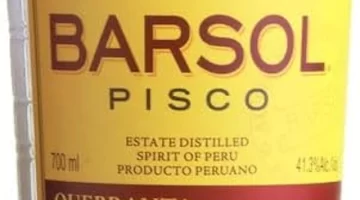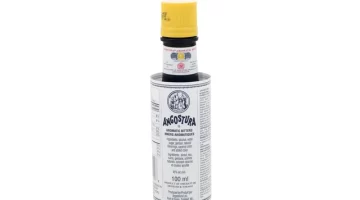What Is Anis?
Travel Distilled explains what anis is, where it comes from, how it’s produced, and how to use this licorice-flavored spirit.
Anis is a beverage made from the anise plant, Pimpinella anisum. It is also commonly known as aniseed drink or anise-flavored liqueur. Anis has a distinctive licorice-like flavor profile and is often enjoyed as an aperitif or digestif. It is known for its strong aroma and is used in various cocktail recipes.

Where is Anis From?
Anis is believed to have originated in the Mediterranean region, particularly in Greece and Turkey, where the anise plant is native. It has been used for centuries for its culinary and medicinal properties. The drink has also gained popularity in other parts of the world, including the Middle East, Latin America, and parts of Europe.
Historically, anis was believed to have therapeutic properties and was used to aid digestion and relieve various ailments. It was also used as an aphrodisiac in some cultures. Over time, anis evolved into a popular spirit, and today it is known for its unique taste and versatility.

How Is Anis Made?
The process of making anise-based drinks, such as anisette, pastis, absinthe, or ouzo, involves several steps, including the selection of ingredients, distillation, flavoring, and bottling. Here’s a general overview of how anise-based drinks are made:
Selection of Ingredients: The primary ingredient in anise-based drinks is anise itself. Other botanicals such as fennel, wormwood (in the case of absinthe), and various herbs and spices may also be used depending on the specific recipe. Additionally, alcohol (typically distilled spirits such as neutral grain spirits or grape spirits) and water are essential components.
Distillation: The base alcohol is distilled to a high proof to create a neutral spirit. This spirit serves as the foundation for the anise-flavored drink. In the case of absinthe, the distillation process may involve macerating the botanicals in the alcohol before distillation.
Flavoring: After distillation, the neutral spirit is flavored with anise and other botanicals. This can be done through various methods, including maceration (soaking the botanicals in the alcohol to extract flavor), distillation (where the alcohol is redistilled with the botanicals to infuse flavor), or a combination of both methods. The exact process and recipe vary depending on the specific type of drink being made.
Coloring (if applicable): Some anise-based drinks, such as absinthe, may undergo additional steps to impart color. This can involve macerating additional botanicals like wormwood or hyssop, which contribute to the green color traditionally associated with absinthe. However, not all anise-based drinks require coloring.
Bottling: The final step involves filtering the flavored spirit to remove any sediment or impurities before bottling. The bottled drink is then sealed and labeled for distribution and consumption.
It’s important to note that the specific process for making anise-based drinks can vary significantly depending on factors such as regional traditions, legal regulations, and the preferences of the producer. Additionally, the production of certain drinks, such as absinthe, may be subject to strict regulations regarding ingredients and methods to ensure safety and authenticity.

What Types of Anis Are There?
There are various types of anis available, each with its own distinct flavor and production process. Some popular examples include:
- Anisette: A sweetened anis spirit that is often consumed after a meal. It has a pronounced licorice taste and is typically enjoyed neat or on the rocks.
- Pastis: A French anis-flavored liqueur that is often mixed with water to create a refreshing aperitif. Pastis is known for its strong herbal notes and is commonly associated with the region of Provence.
- Ouzo: A Greek anis-based spirit that is typically clear in color and often served as a traditional aperitif. Ouzo is known for its distinctive licorice flavor and is typically diluted with water or ice. For full information about ouzo, see the Greek Ouzo page on our Greece Travel Secrets website.

How to Enjoy Anis
Anis can be enjoyed in various ways. Some popular serving suggestions include:
- Neat: Sipping anis on its own, at room temperature, allows the drinker to appreciate its unique flavors and aromas.
- On the rocks: Serving anis over ice can help mellow its strong flavor and provide a refreshing twist.
- With water: Many anis drinks are traditionally served with water, which helps to dilute the strong flavor and bring out the desired taste.
Anis is also used as an ingredient in cocktails and culinary recipes. It can add a unique twist to classic cocktails like the Sazerac or the Absinthe Frappé. Additionally, anis is commonly used in culinary dishes, particularly in Mediterranean cuisine, to add a touch of flavor and aroma.
When using anis in cooking, it is essential to use it sparingly, as its flavor can be overpowering. Common uses include flavoring baked goods, sauces, or stews. Anis is often paired with citrus fruits, fennel, or other herbs and spices to balance its intense flavor profile.















